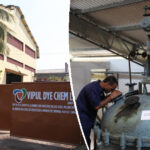CEPI ContainerBoard(CCB) has recently updated and released its document on the same. This document represents the outcome of a review of the list of containerboard grades, their specification and classification. These paper grades are produced and sold by the members of the European containerboard industry, and are used in the manufacture of corrugated board.
The list was first issued in 1992, and has regularly been updated in order to integrate the improvements of the knowledge and the understanding of how the properties of papers influence properties of the box and the performance of the corrugator. This document is the sixth update and it represents the conclusions of the review made by the Cepi ContainerBoard Technical Committee, group of technical experts commissioned to review this list and to update it using current knowledge of the papers, their properties, and performance.
The first ambition of the list is to cover most of the containerboard qualities used by the corrugated industry in Europe and to give a brief technical description of them, not to describe the process they are made from. In carrying out this update, the group has endeavored to consider the grades changes and their associated characteristics. Thus, this sixth update details more deeply white liners, uncoated and coated, integrates the new compression characteristic (S-Test) for the recycled fluting, presents in detail the recycled dual grades and their associated physical characteristics. However, it should be recognized that not all of the relevant properties can be described by the existing measuring methods; as a consequence, the group plans to continue adjusting certain parameters in the years to come.
The second ambition of the experts was to maintain most of the existing code structure in the document, and it cannot be pointed out strongly enough that the increased trade between companies and usage of EDI message means an increased demand for all papermakers to mark their products according to the standard described in this document.
However, the Technical Committee recognized that the usage of two digits does not cover all the needs, which can be foreseen for the coming years. It makes it necessary to introduce, in the future, either two extra digits to describe all product variations supplied to the corrugated board industry or a complementary system of identification (e.g. a two-dimensional code).
As in the preceding issues, the document is subdivided into groups of products used for the production of corrugated board. The main changes to the previous document are:
- For the white grades, introduction of brightness references according ISO 2470-2 in parallel of values according to ISO 2470-1 (which were the references until now). In consequence, liners will have to respect either the (historical) references (ISO 2470-1) “OR” the second set of references (according to ISO 2470-2)
- Replacement of the “Mottled white top kraftliner” by “Other white kraftliner, uncoated”
- For coated white liners (kraftliners and testliners), introduction of subgrades in order to be more in line with the current European supply structure.
- The material definition of testliner as well of the brown kraft top liner grade has been redefined
- Introduction of a chapter dedicated to brown high performance recycled liner with its material definition and characteristics
- Due to the limitations seen at measuring CMT of high substances and the rising trend to light weight fluting (used at low flute heights), the Technical Committee developed an alternative method – the S-Test – meant to replace the CMT measurement (A flute) as well the CMT first plateau. Consequently, Medium 1, HP3 and HP2 as well Light weight medium present alternative definitions based on SCT-CD and S-Test.
- Introduction of a chapter dedicated to Dual purpose containerboard and presentation of recycled dual grades with details of subgrades and their characteristics
- Renewed grade numbering table in order to integrate all the modifications mentioned above.
Furthermore, several previous principles were confirmed and completed:
- Grade numbers that are not allocated in the list shall not be used. However, in order to meet the recurrent request for the identification of specialty papers that can be produced by some plants, some specific numbers were allocated for each of the main grade families (brown and white top kraftliner, semi chemical fluting, brown and white top recycled liners, recycled fluting, dual papers). Their fair use remains subject to the compliance with the corresponding Material Definition of the corresponding grade “family” (especially the primary pulp content)
- Producers may either refer to the ISO 2758 or ISO 2759 for the bursting strength of their liners. However, whatever is the standard used, the liners must fulfil the minimum required level of performance of the category claimed, as indicated in the document. The same principle also applies for the brightness of the liners according to ISO 2470-1 or ISO 2470-2.
- All the indicated values in the tables or graphs are either minimum or maximum values, which can be guaranteed, and in no case nominal values (except explicitly mentioned).
Finally, the reference document is the English version and its updated issue can be found on the Cepi ContainerBoard website: http://cepi-containerboard.org




